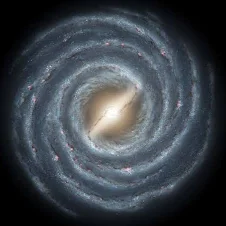2.1 - star magnitudes
1/37
There's no tags or description
Looks like no tags are added yet.
Name | Mastery | Learn | Test | Matching | Spaced |
|---|
No study sessions yet.
38 Terms
how did hipparchus classify stars?
by their brightness to the naked eye (i.e., intensity of light received);
1 = brightest
6 = dimmest
what is brightness?
intensity of light received
which feature of stars did hipparchus classify his stars by?
their brightness to the naked eye
in hipparchus’ star classification, which objective point was the brightness measured from?
the naked eye
how did hipparchus’ scale range?
1 = brightest
6 = dimmest
for hipparchus star classification, what does a star of brightness 1 mean?
it was the brightest
for hipparchus star classification, what does a star of brightness 6 mean?
it was the dimmest
what were the problems with hipparchus’ classification?
he did not measure the brightness of the sun, so questions were raised where to class the sun
only considered stars emitting visible light
subjective, therefore not accurate
the invention of telescopes led to it’s discontinuation
why was the invention of telescopes a problem for hipparchus’ classification?
was hipparchus’ scale objective or subjective?
subjective
why was hipparchus’ scale subjective?
it relied on the observer’s own opinion on how bright a star is, which could vary between observer’s
it didn’t account for any problems the observer had with their vision that could affect how they perceived the brightness of a star
why does the subjectivity of hipparchus’ scale affect the classification’s accuracy?
the brightness of stars could not be considered as the objective truth because it’s classification is purely subjective, which means the value of brightness could vary between different observers
what didn’t hipparchus consider in his scale?
the brightness of our sun
why was it a problem that hipparchus didn’t measure the brightness of our sun?
because now we don’t know where to class the sun on his scale
what were the only kinds of stars hipparchus considered in his scale?
stars that emit visible light
why did hipparchus only consider stars that emit visible light in his scale?
his scale considered brightness. if a star did not emit visible light, it’s light intensity could not be measured, therefore stars that didn’t emit visible light would not be considered
why was it a problem that hipparchus only considered stars that emit visible light in his scale?
it did not consider a wholistic view of the stars in the universe, as not all stars emit visible light
what is a light year?
the distance light travels through space in 1 year
9.5 × 10^15 m
how long does it take light from the sun to reach earth?
500s
how long does it take light from the sun to reach jupiter?
40 mins
how long does it take light from the sun to reach pluto?
6 hours
derive a light year
1 light year = speed of light x time in seconds for one year
9.45 × 10^15 m =9.45×10¹⁵ m x 3 × 10^8 × 31.56 million seconds
what is the unit of measurement for a light year?
metres
how long does it take light to travel across the milky way galaxy?
100,000 years
what is a spiral arm?
characteristic feature of a galaxy - spiral shaped regions of enhanced brightness from stars and planets

where is the sun and nearby stars located in the milky way galaxy?
in the spiral arms
how many stars are in a galaxy?
almost a million million (trillion)
what are galaxies?
assemblies of stars prevented form moving away from each other by their gravitational attraction
why can’t stars in a galaxy move away from each other?
because of their gravitational attraction
are stars in a galaxy prevented or free to move away from each other?
prevented, because of their gravitational attraction
how far away are galaxies from each other?
millions of light years apart
what makes up the space between different galaxies?
empty space
how can astronomers tell if a star is relatively near to earth?
their position shifts against the background of more distant stars as the earth moves around its orbit, known as parallax
HERE
what is parallax?
a way to determine whether is star is relatively close to earth, as the position of nearby stars shift against a background of distant stars as the earth moves around it’s orbit
why does parallax occur?
the line of sight to a nearby star changes direction over 6 months, as you’re viewing it from a diametrically opposite position when the earth is halfway through its orbit
in which time intervals can we employ parallax to tell the determine nearby star distance from earth?
6 months, i.e., halfway through the earth’s orbit around the sun
why do we employ parallax every 6 months to determine the distance of a nearby star?
a year is 12 months, so 6 months is halfway through the earth orbit. this means the line of sight of sight to a nearby star is in a diametrically opposite direction compared to 6 months before